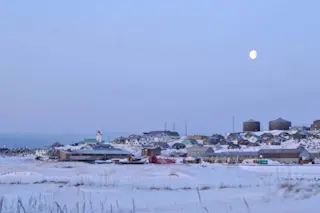The town on St. Paul Island. Photo by Jessica Marshall As the wind whips across the Bering Sea, for an instant it courses over a tiny speck of land called St. Paul Island, far off the coast of Alaska. At the peak of the last ice age some 21,000 years ago, this dot in the middle of the ocean was a volcanic mountain at the southern edge of the Bering Land Bridge, yet as the ice melted and seas rose, its black cliffs became shorelines, trapping ice age fauna on its landscape, the most massive of them the woolly mammoth. I’ve come to St. Paul with a team of six researchers bent on solving a mystery surrounding the mammoths of St. Paul Island: Mammoths survived here for nearly 2,000 years after the last mainland mammoths disappeared from Siberia 8,700 years ago. Trapped here on the island, the mammoths were somehow ...
Hunting for Clues to Why the Last Mammoths Disappeared
Explore the mystery of the mammoths of St. Paul Island and how sediment cores may reveal their extinction timeline.
More on Discover
Stay Curious
SubscribeTo The Magazine
Save up to 40% off the cover price when you subscribe to Discover magazine.
Subscribe













